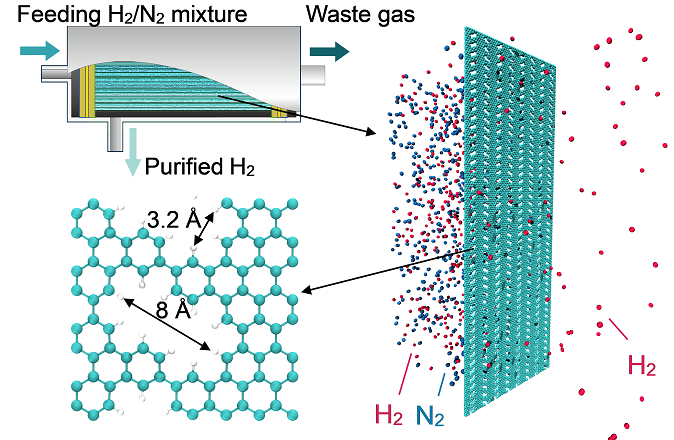Chun Shen, Hu Qiu, Wanlin Guo
Carbon, 182, 2021, 628-633
Abstract:
Hydrogen is mainly produced by gas separation, and a high proportion of it is separated from the hydrogen/nitrogen mixture decomposed from ammonia. However, the productivity of hydrogen by gas separation is constrained by the inevitable trade-off phenomenon between gas selectivity and permeance, known as the Robeson upper bound. Here we find by comprehensive simulations that a bottom-up synthesized nanoporous graphene with high pore density and pinpoint pore size sharply breaks through the Robeson upper bound with high hydrogen permeance and ultrahigh hydrogen/nitrogen selectivity. Hydrogen can easily pass through the densely distributed pinpoint-sized nanopores, while no nitrogen can diffuse across the membrane due to a high energy barrier through the pore. It is also found that the membrane is mechanically strong enough to sustain the pressure for gas separation. Hydrogen permeance could be further enhanced by straining the membrane. These results show that the nanoporous graphene membrane can be a very competitive candidate for hydrogen/nitrogen gas separation.

Link: https://www.sciencedirect.com/science/article/pii/S0008622321005923